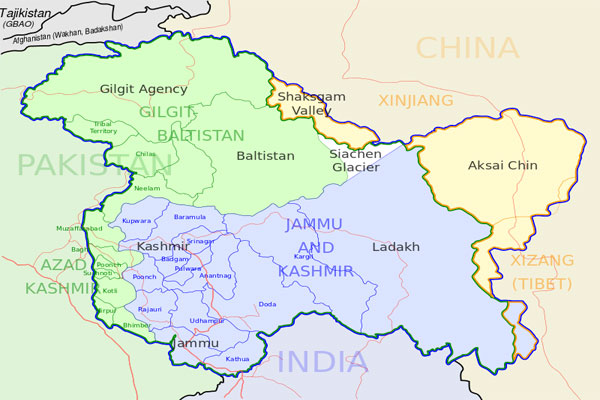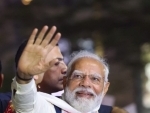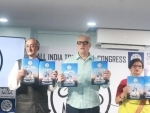
J&K: Turbulence by Design
According to partial data compiled by the South Asia Terrorism Portal (SATP), at least 60 terrorists have already been killed during the first four months and 28 days of the current year (data till May 28, 2017). During the corresponding period of the previous year, SFs had eliminated 53 terrorists. Significantly, this is the highest number of terrorists killed in this period (the first four months and 28 days of the year) since 2010, when at least 115 terrorists were killed in this interregnum.
SFs have upped the ante against the terrorists after suffering increasing losses through 2016, more so in the second half of the year, as well as in the current year. The 88 SF fatalities recorded in 2016 were the highest in this category, on year on year basis, since 2009, when 90 personnel were killed. SFs have already lost 25 personnel in the current year, thus far. During the corresponding period of 2016, fatalities in this category stood at 15. It was way back in 2010 that the SFs had lost a higher number of personnel, 37, during the same period (the first four months and 28 days of the year).
The increased engagement between SFs and terrorists on the ground is indicative of the deteriorating situation in the State in evidence since the second half of 2016. J&K has already recorded 25 fatalities among civilians, the highest number during this period since 2008, at 26. It is pertinent, however, that despite the surge in overall fatalities, as compared to 2015, 2016 recorded the lowest number of civilian fatalities, 14, since the insurgency began in 1998. Nine of 14 civilian fatalities recorded in 2016 were in the second half of the year, as were 58 of the total 88 SF fatalities.
The killing of the HM 'commander' Burhan Wani in an encounter on July 8, 2016, and the subsequent orchestration of street violence - backed by Pakistan-based terrorist formations and covert Pakistani support - has had a cascading effect on the State. Flawed policies and the abject failure of the state in controlling the spiraling violence have created ample opportunities for inimical forces to broaden radical and extremist mobilization and violence. According the State Police Crime Branch data, 3,404 cases of rioting were recorded in 2016, as compared to 1,157 such cases in 2015, an increase of 194.2 per cent. As SAIR has highlighted earlier, such 'uprisings' have had direct Pakistani support in the past, and similar connections and connotations are in evidence in the present cycle of mobilization. Indeed, according to a release dated May 19, 2017, the National Investigation Agency (NIA) has registered a preliminary inquiry into the Pakistani role, noting:
National Investigation Agency has registered a PE (Preliminary Enquiry) into the funding of Hurriyat leaders, namely Syed Ali Shah Geelani, Naeem Khan, Farooq Ahmed Dar, Gazi Javed Baba and others in J&K by Hafiz Muhammed Saeed and other Pakistan based terrorists and agencies to carry out subversive activities in Kashmir and for damaging public property, stone pelting on the security forces, burning of schools and other Government establishments. The NIA has also taken cognizance of the news item related to the recording of conversations between the reporter and leaders of the separatist groups operating in Kashmir valley, by India Today TV, on 16.05.2017 in this regard.
According to a March 29, 2017, report, some fugitive stone pelters identified as Zakir Ahmad Bhat, Farooq Ahmad Lone, Wasim Ahmed Khan, Mushtaq Veeri and Ibrahim Khan made some startling confessions - from being on the payroll of their underground masters to carry out deadly attacks on security forces, public servants and property in the troubled region - in their conversations with India Today TV's'undercover' reporters. "It's Rs 5,000-Rs 7,000 (a month) and clothes. Sometimes shoes as well," Bhat said in the sting tapes, when asked whether he was paid to pelt stones at SF personnel. He, however, did not disclose the identity of his financers: "We will die but won't reveal their names. It's the question of our bread and butter."
Terror funding from Pakistan has also been highlighted on numerous occasions in the past. Most recently, for instance, a Government of India release stated,
The Central Government had received information about illegal transfer of funds from Pakistan to India through import of California Almonds via cross-LOC mechanisms through Trade Facilitation Centers (TFC) in Jammu and Kashmir. Keeping in view the gravity of the matter the Central Government directed the NIA to take up investigation of this case. The NIA has registered the case as RC-17/2016/NIA/DLI on 16.12.2016.
Meanwhile, according to data provided by the Union Ministry of Home Affairs (UMHA), at least 88 local youth joined terrorism in 2016, mostly after the Burhan Wani killing. According to media reports, another 16 local youth have joined terrorism in the current year. Wani was the man responsible for reversing the declining trend of local recruitment in the Valley. According to UMHA data, the number of locals joining militancy had declined from 54 in 2010 to 23 in 2011 further down to 21 in 2012 and just 16 in 2013. In 2014, the number of locals joining militancy increased to 53 and reached at 66 in 2015.
Having succeeded to an extent in fuelling fire in the State with the support of its cohorts within India, Islamabad simultaneously increased its activities along the LoC and International Border (IB). According to UMHA data, there were at least 371 infiltration attempts by the terrorists trained by Pakistan's Inter Services Intelligence (ISI) from across the border in 2016, as against 121 such attempts through 2015, a more than threefold increase. Such attempts had declined sharply in 2015, in comparison to 2014, when there were 222. There have been 47 such attempts in 2017, thus far. The number of terrorists who were forced to return to the Pakistani side rose to 217 in 2016, as against 41 in 2015. More worryingly, there were at least 119 estimated net (successful) infiltrations recorded through 2016, as against 33 in 2015. These infiltration attempts most often occur under cover firing by Pakistan Rangers or Army personnel. UMHA data also indicates a continuing increase in the number of ceasefire violations by Pakistan, at 449 in 2016, as against 405 in 2015.
Not surprisingly, the estimated number of active terrorists in the State has increased. According to varying media reports, there are presently an estimated 500-plus active terrorists in the State - 320 locals and 180 foreigners; as against about 179 - 143 locals and 36 foreigners - prior to Wani's killing in July 2016.
Despite the deterioration consequent upon these various factors, there are some early signs of improvement in the law and order situation in the State. According to the Month-wise details of Law & Order incidents since July 8, 2016, provided by UMHA, the number of such incidents has declined considerably.
According to partial data compiled by the SATP, the number of such incidents declined further to 22 in April 2017, though May registered a spike, at 41. Nevertheless, the situation appears to be coming under reasonable control in comparison to earlier months.
For the time being SFs have done their bit in restoring the law and order in the State, as expected, despite tremendous odds - both at the operational and at the political leadership level. Sustaining such improvement, however, lies entirely in the hands of the political class, both at the Centre and in the State. Unfortunately, there is little evidence of the necessary political sagacity needed to bring J&K out of its orchestrated turbulence and restore it on the trajectory to the greater stabilizationthat was visible in before the present cycle of disturbances.
Support Our Journalism
We cannot do without you.. your contribution supports unbiased journalism
IBNS is not driven by any ism- not wokeism, not racism, not skewed secularism, not hyper right-wing or left liberal ideals, nor by any hardline religious beliefs or hyper nationalism. We want to serve you good old objective news, as they are. We do not judge or preach. We let people decide for themselves. We only try to present factual and well-sourced news.







